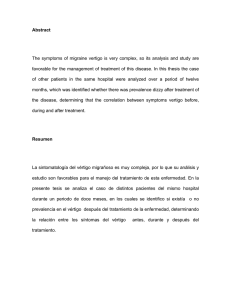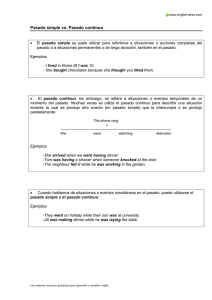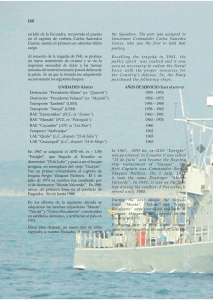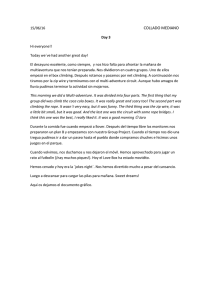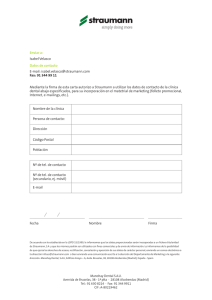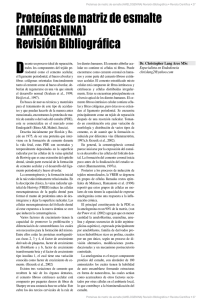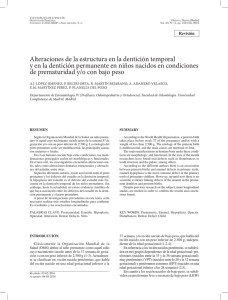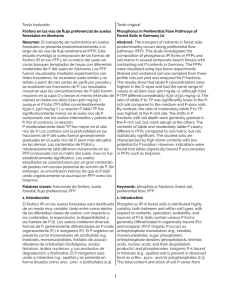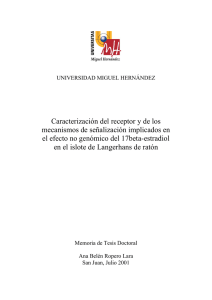WP SF-Treatment of Class.indd
Anuncio
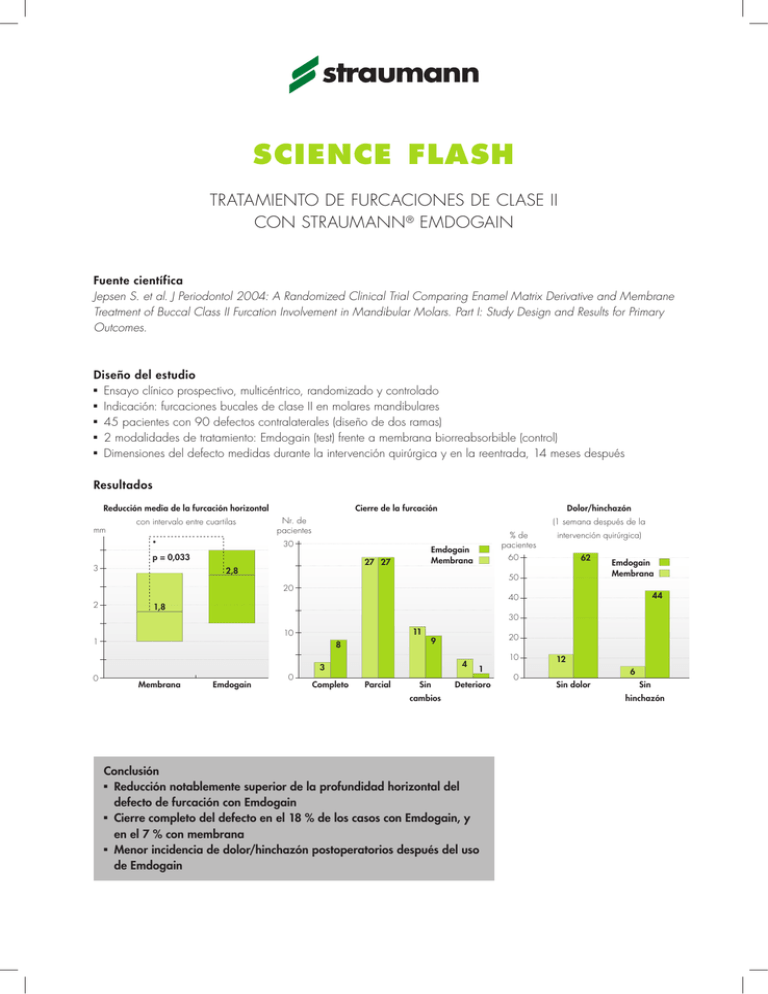
Science Flash TRATAMIENTO DE FURCACIONES DE CLASE II CON STRAUMANN ® EMDOGAIN Fuente científica Jepsen S. et al. J Periodontol 2004: A Randomized Clinical Trial Comparing Enamel Matrix Derivative and ­Membrane Treatment of Buccal Class II Furcation Involvement in Mandibular Molars. Part I: Study Design and Results for Primary Outcomes. Diseño del estudio ▪▪ Ensayo clínico prospectivo, multicéntrico, randomizado y controlado ▪▪ Indicación: furcaciones bucales de clase II en molares mandibulares ▪▪ 45 pacientes con 90 defectos contralaterales (diseño de dos ramas) ▪▪ 2 modalidades de tratamiento: Emdogain (test) frente a membrana biorreabsorbible (control) ▪▪ Dimensiones del defecto medidas durante la intervención quirúrgica y en la reentrada, 14 meses después Resultados Reducción media de la furcación horizontal mm con intervalo entre cuartilas * Cierre de la furcación (1 semana después de la 30 p = 0,033 3 Dolor/hinchazón Nr. de pacientes 27 27 2,8 % de pacientes 60 Emdogain Membrana 62 50 20 2 intervención quirúrgica) Emdogain Membrana 44 40 1,8 30 0 11 10 1 8 Membrana Emdogain 0 4 3 Completo 20 9 Parcial Sin 10 1 Deterioro ­cambios Conclusión ▪▪ Reducción notablemente superior de la profundidad horizontal del defecto de furcación con Emdogain ▪▪ Cierre completo del defecto en el 18 % de los casos con Emdogain, y en el 7 % con membrana ▪▪ Menor incidencia de dolor/hinchazón postoperatorios después del uso de Emdogain 0 12 6 Sin dolor Sin ­hinchazón Abstract Treatment of Class II Furcation with Straumann ® Emdogain Jepsen S. Background: The objective of this multicenter, randomized trial was to compare enamel matrix derivative (EMD; test) with barrier membranes (control) for the treatment of mandibular buccal Class ll furcation defects. Methods: Forty-five patients with 90 comparable defects on contralateral molars were included. Defects were randomly assigned to EMD or bioabsorbable barrier membrane; the contralateral defect received the alternative treatment. Assessments at baseline and 8 and 14 months included gingival margin levels, probing depths, bleeding on probing, vertical attachment levels, and vertical bone sounding from a stent at five buccal sites/tooth. Defect dimensions were recorded at surgery and during reentry at 14 months. Change of open horizontal furcation depth was the primary outcome variable. Adverse reactions and patient p ­ erceptions were also noted. Results: Both treatment modalities led to significant clinical improvements. The median reduction of open horizontal furcation depth was 2,8 mm with the corresponding interquartile interval (1.5 mm, 3.5 mm) at test sites compared with 1.8 mm (1.0 mm, 2.8 mm) at control sites. The Hodges-Lehmann estimator of the advantage (reduction test versus control) was 0.75 mm (95 % confidence interval [CI]: 0.125 mm, 1.375 mm, P = 0.033, Wilcoxon). The frequency of complete furcation closure was 8/45 (test) and 3/45 (control); partial closure, 27/45 in both groups; no change, 9/45 and 11/45, respectively; and deterioration, 1/45 and 4/45, respectively. The frequency of no pain or no swelling at 1 week post-surgery was 62 % and 44 %, respectively, at the test sites and 12 % and 6 % at the control sites. Conclusion: There was a significantly greater reduction in horizontal furcation depth and a comparatively lower incidence of postoper ative pain/swelling following enamel matrix derivative compared to membrane therapy. J Periodontol 2004; 75:1150-1160. Usado con la autorización del Journal of Periodontology Formulario de pedido de copia Apellidos Nombre Dirección Código postal / ciudad País Teléfono E-mail POR FAVOR, ENVÍE ESTE FORMULARIO por FAX o por CORREO POSTAL a su filial local de Straumann 12/09 Por favor, envíenme una copia de este estudio.
